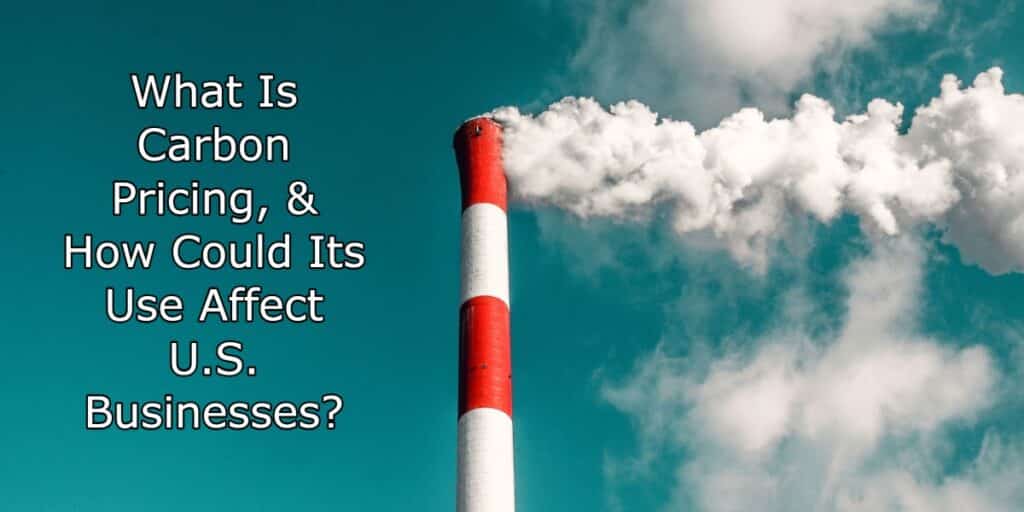
As the push to stem the tide of global climate change increases, countries are exploring more ways to curtail carbon emissions on a grand scale.
One of the controls many municipalities across the world have put into place is carbon pricing. While the practice has taken off in places such as Canada, it’s a lot slower to gain ground in the United States.
Let’s take a look at what carbon pricing is, and how implementing it nationwide could impact businesses:
What Is Carbon Pricing?
At its most basic, carbon pricing means attaching some kind of financial cost to carbon emissions.
This pricing takes two main forms: Carbon taxing and cap-and-trade programs.
Carbon taxing is the practice of levying a tax on the carbon emissions that are used in producing goods and services. This fee is imposed on the burning of carbon-based fuels, including coal, oil, and gas.
It is designed to make more visible the hidden costs of carbon-emitting activities and, over time, decrease their widespread use.
A fee is charged for every unit of carbon dioxide emitted, and proponents of carbon taxing hope that the added cost of carbon taxing drives more businesses and individual consumers toward renewable, sustainable energy sources.
Cap-and-trade programs put a cap on greenhouse gas emissions and issue emissions permits, also known as allowances or certificates. Emitters, usually businesses, can trade in their certificates, allowing the market to find the lowest-cost emissions reductions available.
The cap portion of cap-and-trade programs is a limit placed on the level of greenhouse gas emissions. Over time, this cap grows more strict and drives the switchover to sustainable energy in order to meet these caps.
How Can Carbon Pricing Impact Businesses?
While carbon pricing programs aren’t particularly widespread in the United States yet, there is a push by the Biden administration to create more policies on the federal level to combat climate change.
Some ways that carbon pricing may impact businesses in the United States include:
Higher cost at the outset
Whether business owners opt to immediately switch over to more sustainable energy usage or they willingly accept the carbon pricing system, the cost of doing business will rise.
However, due to the widespread use of carbon pricing globally, all businesses in countries utilizing carbon pricing will experience the same cost increases. Additionally, the savings in the long run of implementing sustainable energy sources will help to balance the upfront costs, stabilizing the cost impact.
Spur innovation
Businesses that have gotten set in a particular way of operating under fossil fuels will be forced to adapt to more sustainable energy sources. This will help them become more innovative in their approaches and can benefit their bottom lines over time.
Become a marketing opportunity
Those businesses that do take on the switchover to sustainable energy sources will be able to use their shift as a marketing opportunity. As more and more consumers become concerned with the environmental impact of the goods and services they utilize, companies making the change can market their efforts and potentially gain more business.
Grow competitive globally
As the world largely shifts toward curtailing the tide of climate change, businesses that adopt the shift away from fossil fuels will become more competitive on the global market.
The savings that businesses see from using renewable energy over time can be used to decrease their prices or raise wages for their workers, helping American businesses better compete on a global stage.
Energy Auditing Software for Businesses
If your business is looking at ways to become more energy efficient but needs the data required to chart a course forward, look no farther than EMAT Field Auditor. Our cloud-based app decreases the time and hassle of traditional energy audits, reducing mistakes and improving decision-making. Schedule your demo today!